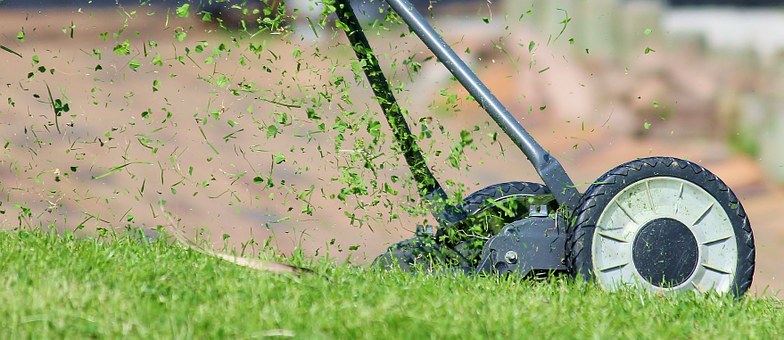
Lawns are covered with many species of grasses, but they fall into two main categories: warm and cool season. The species of grass you have in your yard will depend on where you live and your climate. Some of the rules of lawn care are universal, but some depend on whether you have warm or cool season grass.
Warm season grasses include Bahia, Bermuda, centipede, St. Augustine, and zoysia. They spread by runners, either above or below ground, and create a thick mat of turf that can prevent weeds and control erosion. These types of grasses can grow easily as sod.
Fescues and ryegrass are cool season bunch grasses. Fescue consists of a lot of individual plants in bunches. Bunch grasses are usually sown from seed and do not naturally hold together as sod. Kentucky bluegrass is a cool season grass that spreads by runners.
Regardless of what type of grass you have, it is important to cut it regularly with a sharp mower blade. A dull blade can tear the grass and allow pests and disease to infect it. Do some research to find out the recommended height of the species of grass you have. Never cut more than one-third of the height at any time. If your area gets cold winters, you should cut the lawn one last time before winter. Cut it to a height of about 1 inch to prevent snow mold.
You should fertilize your lawn, but the time will depend on the species of grass. You want to fertilize the grass when it is entering its peak growth period. For warm season grasses, fertilize in late spring or early summer and again in late summer. For cool season grasses, fertilize once in the fall.
Aerating your lawn can make it healthier. Aerating creates holes in the ground to help the roots receive oxygen, water, and fertilizer. It also reduces soil compaction and helps the roots grow. Aerate your lawn right before the grass begins its active growing phase (late spring or early summer for warm season grasses and early fall for cool season grasses). You want to give your lawn four weeks of active growth after the aeration and before the first frost.
You can overseed your lawn if a shady area does not get enough sun or if one area gets a lot of traffic. Overseeding can also repair a bare spot if the lawn is damaged. Overseed cool season grasses in late summer or early fall and warm season grasses in late spring or early summer.
The amount of water your lawn needs will depend on the type of grass you have. Warm season grasses generally need 20 percent less water than cool season gasses. Some species develop strong roots to withstand drought, while others go dormant during periods without rain.
You can water your lawn on a regular schedule by setting up a sprinkler system with a timer. Sprinkler System Store offers sprinklers and timers made by many top manufacturers that can give your lawn the right amount of water, regardless of species. Order a sprinkler system today.